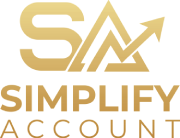Money Management mastery is the cornerstone of a journey towards financial security. Delve into these eight tips to initiate your savings journey and establish a sturdy financial foundation.

1. Record and Analyze Your Expenses through Money Management
Firstly understanding your spending habits is the first step in effective money management. Keep detailed records of your daily and monthly expenses, therefore utilizing tools like Bank of America’s Spending & Budgeting tool for seamless categorization.
2. Integrate Saving into Your Budget
Craft a comprehensive budget that encompasses all your monthly spending, including regular and irregular expenses. Moreover allocate a portion specifically for savings, starting with a comfortable amount and gradually increasing it to 15-20% of your income.
3. Identify and Reduce Nonessential Expenses
Trimming nonessential expenses is crucial for substantial savings. Identify areas where you can cut back, such as dining out and entertainment. Indeed review fixed monthly costs, like insurance plans, and opt for free or low-cost activities while practicing delayed gratification for nonessential purchases.
4. Set Clear Savings Goals
Define tangible savings goals, distinguishing between short-term (emergency fund, vacation) and long-term (home down payment, retirement) objectives. Establish small, achievable short-term goals to provide psychological boosts along your savings journey.
5. Prioritize Your Financial Goals
After assessing your expenses and income, prioritize savings based on your goals. Whether it’s a near-future car replacement or a long-term retirement plan, thus understanding and prioritizing your goals provide clarity on how to allocate your savings effectively.
6. Choose the Right Tools
Explore a variety of savings and investment accounts suitable for your goals. Consider factors such as balance minimums, fees, interest rates, and risk to choose the mix that aligns best with your financial objectives.
7. Money Management: Automate Your Savings
Streamline your saving process by leveraging automated transfers between your checking and savings accounts. Schedule transfers or split your direct deposit to ensure a portion goes directly into your savings. Additionally, explore tools like credit card rewards and spare change programs for extra savings.
8. Monitor and Nurture Your Savings
Regularly review your budget and track your progress. This not only helps you adhere to your savings plan but also allows for quick identification and resolution of any issues. Familiarize yourself with various savings tools to discover new ways to boost your savings.
Bonus Tips:
- Embrace a frugal mindset by distinguishing between needs and wants.
- Negotiate bills and seek better deals on essential services.
- Consider investing in financial education to enhance your money management skills.
- Leverage technology for financial tracking and additionally explore budgeting apps for additional support.
Money Management: Q&A Section
Q1: How do I decide the right savings goal for me?
Categorize goals into short-term and long-term. Thus consider emergency funds, vacations, or down payments for short-term, and homes, education, or retirement for long-term.
Q2: Can I use multiple saving tools simultaneously?
Absolutely. Choose a mix of tools based on your goals not only considering factors like interest rates, risk, but also accessibility.
Q3: Is it advisable to review and adjust my budget regularly?
Yes, regular budget reviews are crucial. Thus they help you stay on track, identify issues, and find new opportunities to save.
Want to know more? Click here.


